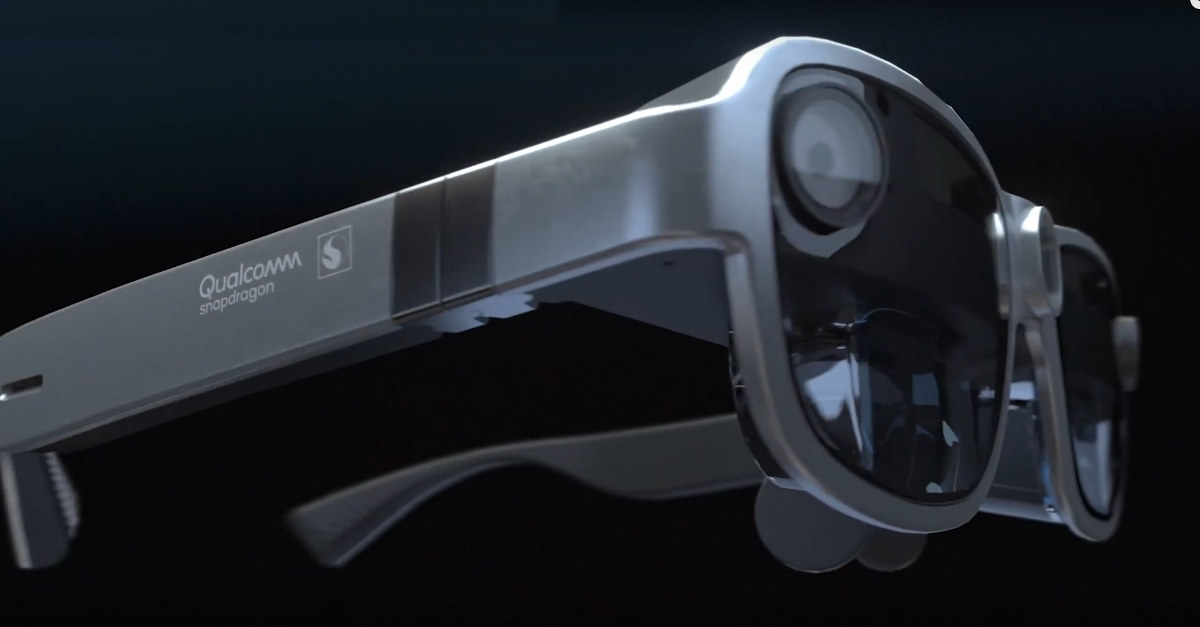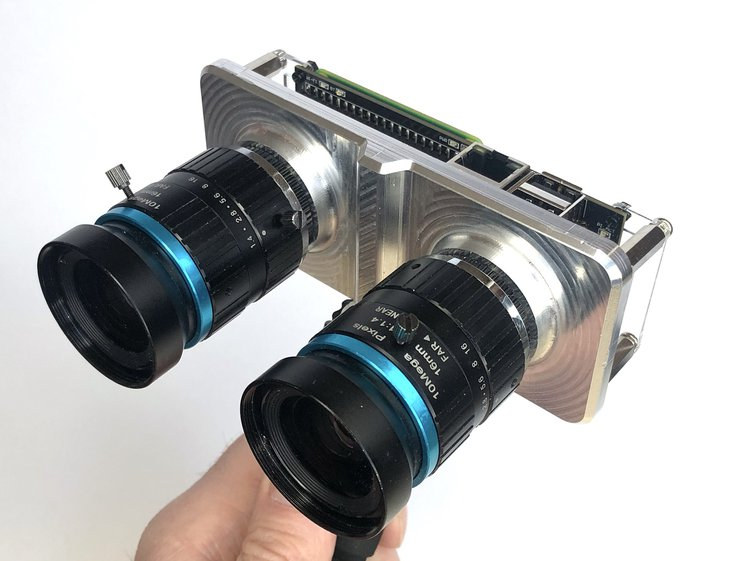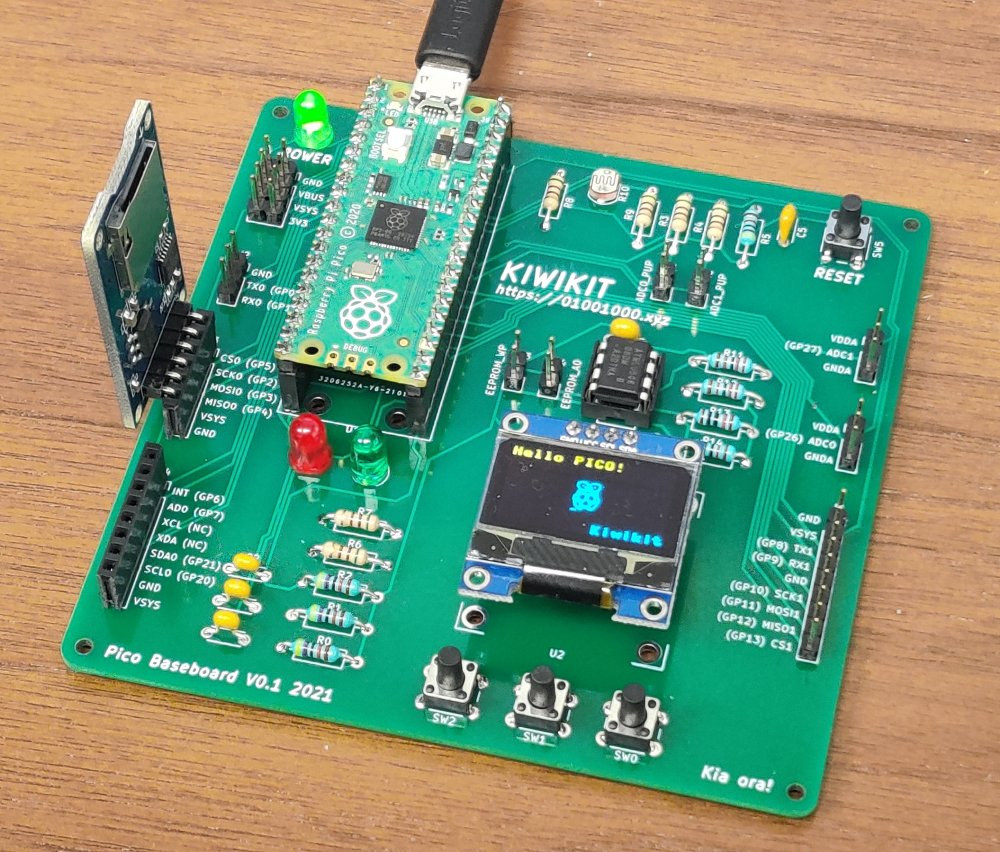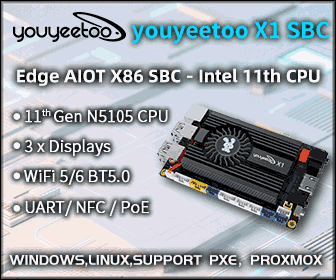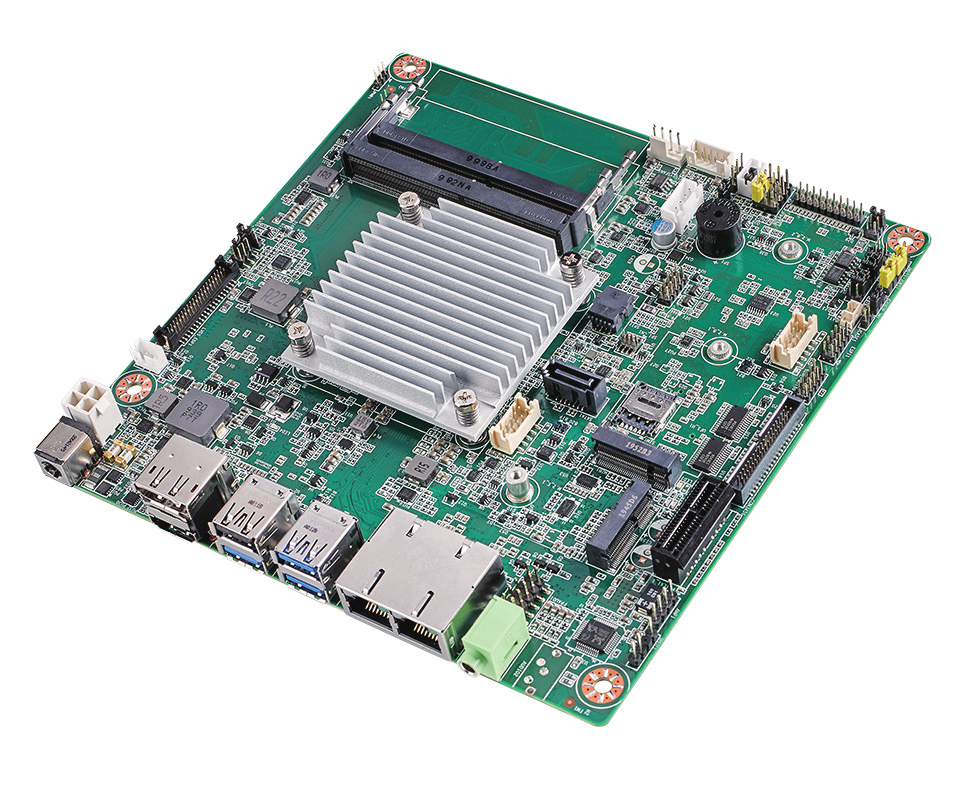Sony Semiconductor Israel, previously known as Altair Semiconductor, has announced the launch of the Altair ALT1255 NB-IoT (NB2) chipset. The 5G-ready chip comes with an integrated SIM, a user MCU, and a GSM/GPRS fallback modem. Sony Altair ALT1255 NB-IoT chipset specifications: MCU core – Arm Cortex M4 MCU with 192KB RAM for user applications Cellular connectivity CAT-NB1 up to 27.2 Kbps DL, 62.5 Kbps UL CAT-NB2 up to 127 Kbps DL, 158 Kbps UL Carrier-grade integrated SIM (iSIM) 3GPP Release 14 Features – eDRX, PSM, Relaxed monitoring, RAI (Release Assistance Indication), Large TBS, and Dual HARQ processes “OneSKU” frequency range 617 – 960 MHz and 1695– 2200 MHz; Frequency bands HD-FDD bands – 1, 2, 3, 4, 5, 8, 12, 13, 14, 17, 18, 19, 20, 25, 26, 28, 66, 70, 71 and 85 Optional support for 410-467.5 MHz bands: 31, 72, 73, 87, 88 2G quad-band support: GSM-850, E-GSM-900, […]
Qualcomm unveils Snapdragon XR1 based AR smart glasses reference design
Qualcomm introduced the Snapdragon XR2 5G VR Reference Design last year based on their latest Snapdragon XR2 virtual/extended reality processor. But the company never designed a reference design for the earlier Snapdragon XR1 that was found in Google Glass Enterprise Edition v2. Better late than never, as the company has now announced the Snapdragon XR1 AR smart viewer reference design. If you happen to be a human not part of Qualcomm’s marketing team, you may wonder what an “AR smart viewer” is. The team behind the terms “Mobile Platform” (i.e. SoC + some companion chips), “Visual subsystem” (i.e. GPU, ISP, and stuff), is now bringing the new “AR Smart viewer” term for what commoners like myself used to call “smart glasses”. The reference design can tether to a compatible smartphone, Windows PC, or processing puck and is said to work best with other Qualcomm Snapdragon platforms. Some of the highlights […]
Arduino MKR IoT Carrier embeds display, sensors, and I/Os for IoT projects
Arduino Oplà IoT Kit was launched last fall as the first open programmable IoT platform from the company. The kit included everything you need to create your own IoT devices with MKR IoT carrier with a 1.3-inch OLED color display, environmental sensors, capacitive touch buttons, Arduino MKR WiFi 1010 board, external PIR motion and moisture sensors, a circular plastic enclosure, and various cables. But the community soon wanted to only buy the carrier board without having to purchase the whole kit, so Arduino has just started to sell MKR IoT Carrier board as a standalone product. Arduino MKR IoT Carrier features & specifications: Compatible with Arduino MKR family boards with WiFi, LoRa, NB-IoT, or 3G cellular connectivity Storage – MicroSD card holder Display – Round 1.3-inch OLED display I/Os 2x 24V relays 3x Grove connectors include two analog and one digital (I2C) Sensors – Temperature, humidity, pressure, RGBC light, gesture […]
StereoPi v2 stereoscopic camera is powered by Raspberry Pi CM4 (Crowdfunding)
StereoPi stereoscopic camera based on Raspberry Pi Compute Module 3 was introduced in late 2019 on Crowd Supply. The camera can record 3D video, create 3D depth maps with OpenCV, and benefits from the Raspberry Pi software ecosystem. The developers are now back with an upgraded model. StereoPi v2 comes with many of the same features, but as it is based on Raspberry Pi CM4 (Compute Module 4) it offers better performance, Gigabit Ethernet, Wifi & Bluetooth connectivity out of the box, while other features like PoE, TFT screen, shot button, etc.. are optional. StereoPi v2 specifications: Supported SoM – Raspberry Pi CM4 or CM4Lite modules Storage – MicroSD card socket Video Output – Micro HDMI port Camera I/F – 2x MIPI CSI camera connector plus “hackable camera lines” Networking – Gigabit Ethernet RJ45 port, plus optional WiFi 5 and Bluetooth 5.0 on Raspberry Pi CM4 module USB – 2x […]
Crowbits magnetic blocks for STEM Education work with Arduino, Micro:bit, ESP32, and Raspberry Pi (Crowdfunding)
Elecrow develops and manufactures electronics products for the maker market, and in recent years entered the STEM education market with products such as CrowPi2 Raspberry Pi 4 education laptop that I reviewed last year. The laptop integrates plenty of electronics modules, and students can learn Scratch visual programming as well as Python programming with the educational software running on the laptop. The company has now launched Crowbits magnetic electronic blocks for STEM education, and compatible with Arduino, ESP32, Raspberry Pi, and Micro:bit boards. There are over 80 programmable electronic magnetic modules and Lego bricks, with three different sizes ( large, middle, and small modules) of different colors with blue used for power control and logic control, green for output, yellow for input, and orange for advanced programming. Out of the 80+ modules, around 30 can be used without programming at all. Elecrow provides 5 kits to let users learn basic […]
Kiwikit Raspberry Pi Pico baseboard takes off-the-shelf modules
While it’s possible to use Raspberry Pi Pico with a breadboard or Veroboard, we’ve seen the benefits of inserting the board into a baseboard such as Maker Pi Pico providing LEDs, a MicroSD card, audio output, and the ability to add ESP-01 WiFi module or well as up to two Grove expansion modules. Hammond Pearce decided to design his own Raspberry Pi Pico baseboard with Kiwikit board supporting some of the off-the-shelf modules and interfaces he commonly uses. Kiwikit key features and specifications Supported module – Raspberry Pi Pico Storage – 8-pin header for AT24C08 EEPROM up to 1KB Display – Connector for I2C SSD1306 OLED display On-board sensor – LDR (light-dependent resistor aka photoresistor) connected over analog input I/Os SPI header working for instance, with SD card modules as shown in the photo above. I2C header compatible with MP-6050 accelerometer/gyroscope modules Header with 2x ADCs with optional pull-ups that […]
ZiHintPause is the first RISC-V extension ratified under the Fast Track Architecture Extension Process
RISC-V open architecture allows designers to implement their own instructions, and some of those may become an official RISC-V extension. But the process to approve a new extension may have been suboptimal, so RISC-V International has just unveiled the Fast Track Architecture Extension Process, or Fast Track for short, that streamlines the ratification of small architecture extensions, as well as ZiHintPause, the first extension to be ratified under the new Fast Track process. The process is designed for simpler extensions that are uncontentious and offer value to the RISC-V community at large, so it’s not suitable for more complex extensions. An extension that has been submitted for consideration will undergo an internal review before entering a 45-day public review process. You can read detailed rules for the new extension ratified process here. The ZiHintPause extension went through this 45-day review process on Google Group, and was very recently ratified. The […]
Advantech Elkhart Lake mini-ITX motherboard offers triple display support, dual LAN, eight USB and six COM ports
We’ve seen a fair amount of Intel Elkhart Lake platforms including modules, 3.5-inch SBCs, Pico-ITX boards, and embedded mini PCs, but so far, I had not noticed any Elkhart Lake mini-ITX motherboard. Advantech AIMB-218 motherboard offers a choice of low-power Atom, Celeron and Pentium Elkhart Processor, and thanks to the larger form factor plenty of I/Os including four display interfaces (DP++/HDMI/eDP/LVDS) supporting up to three display, eight USB port, six serial COM port, and dual Gigabit Ethernet. Advantech AIMB-218 specifications: SoC (one or the other) – Intel Atom x6413E quad-core processor @ 1.50 GHz / 3.0 GHz (Turbo) with 16EU Intel UHD graphics; 9W TDP Intel Celeron N6211 dual-core processor @ 1.20 GHz / 3.0 GHz with 16EU Intel UHD graphics; 6.5W TDP Intel Celeron J6413 quad-core processor @ 1.80 GHz / 3.0 GHz with 16EU Intel UHD graphics; 10W TDP Intel Pentium J6426 (new part) quad-core 2.0 GHz / […]



